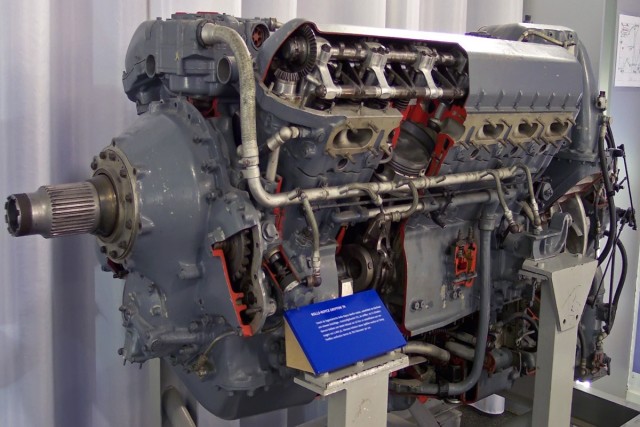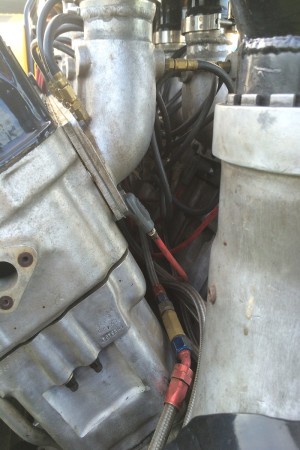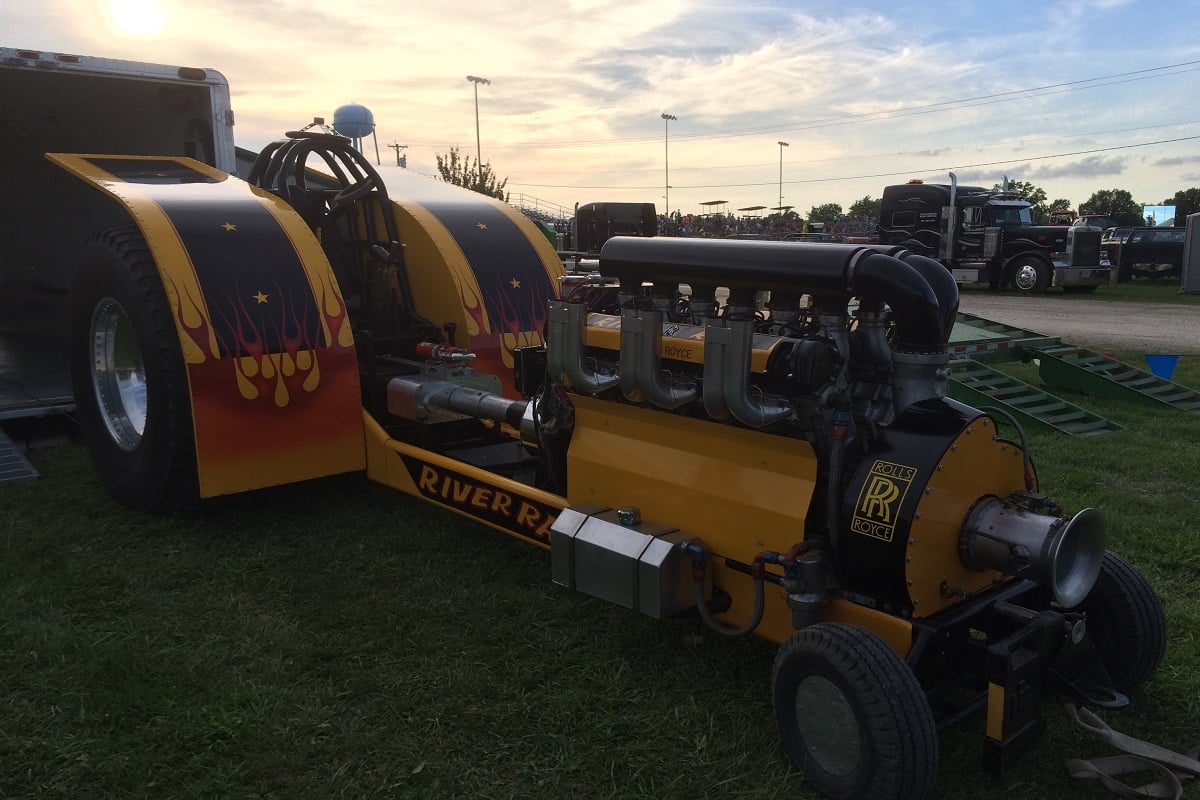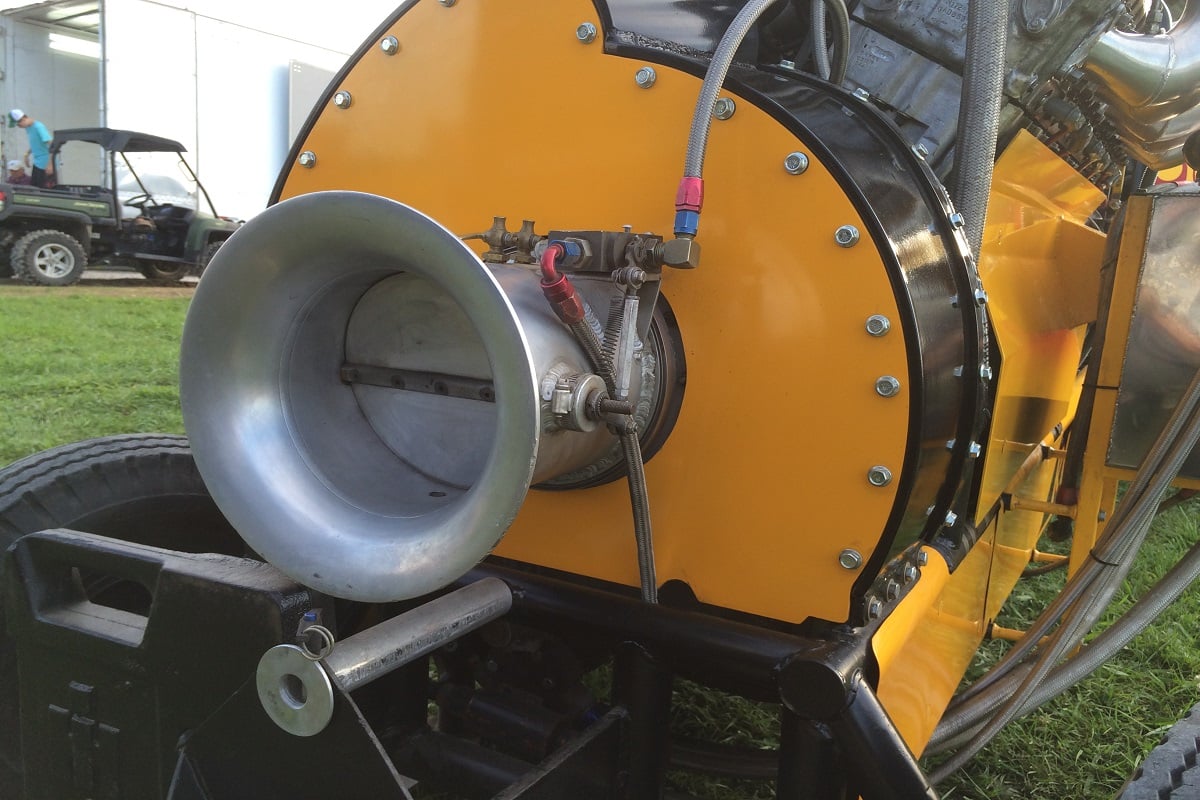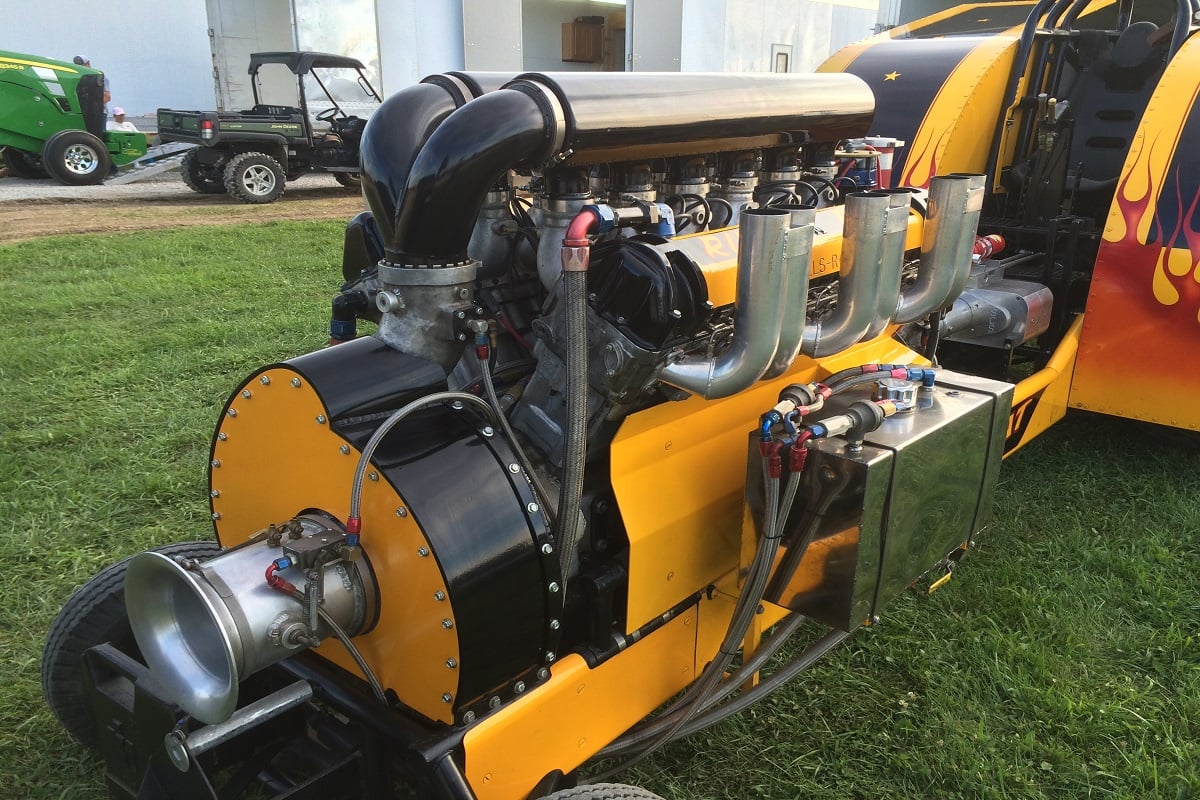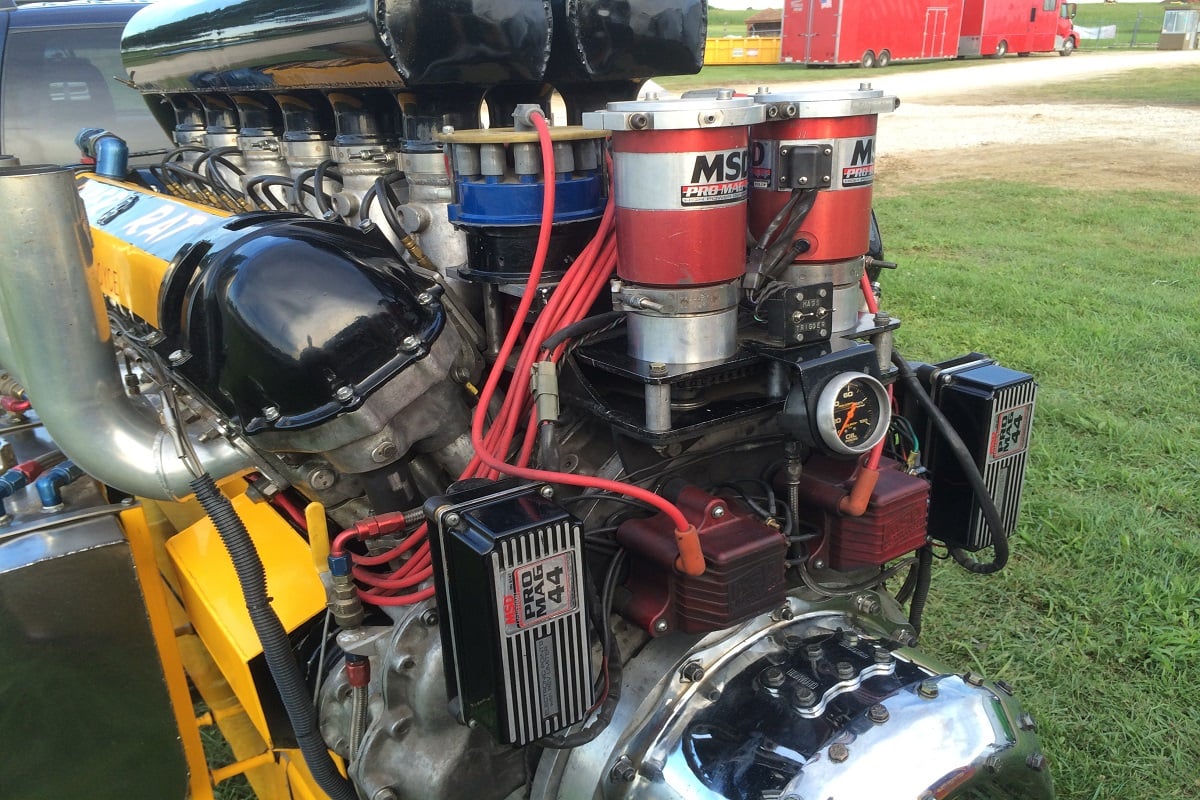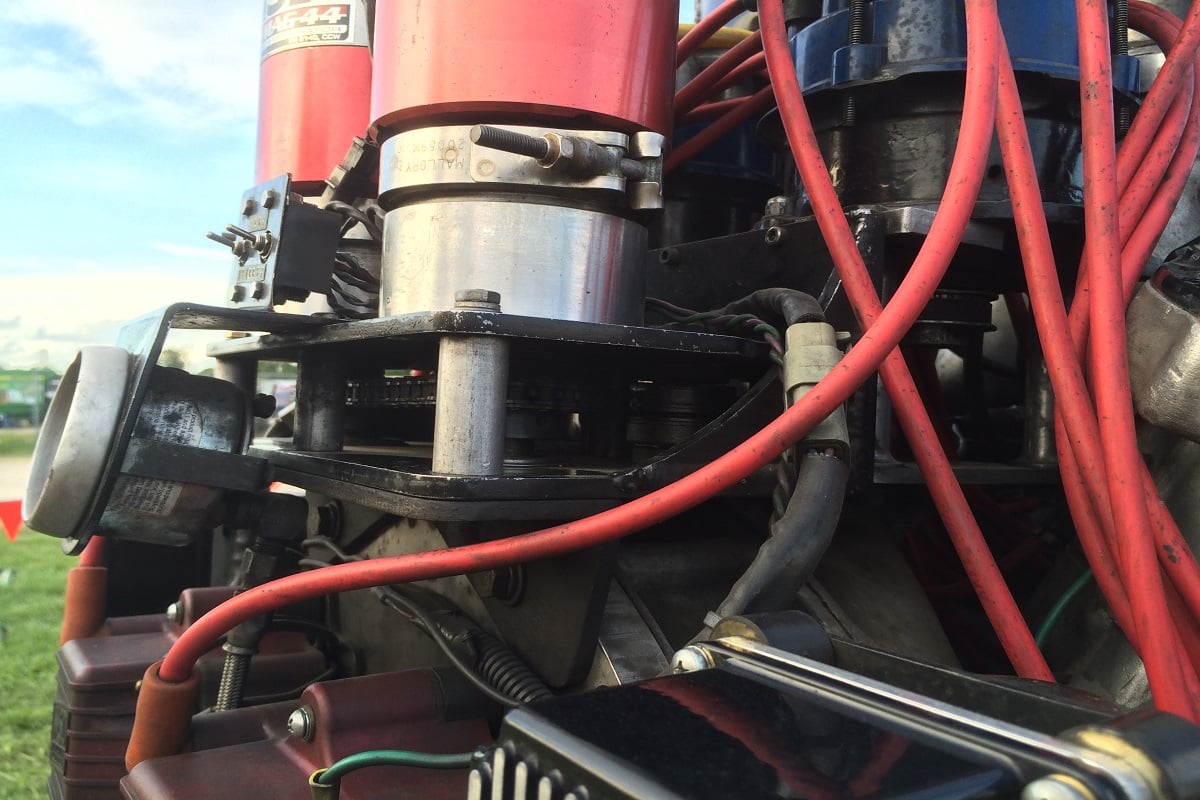When most people think about the nameplate “Rolls-Royce”, they visualize a lumbering luxury car that only few can afford, equipped with a chauffeur that will offer to take you anywhere your heart desires. Not in this case. Here, the name refers to a 2,239 cubic inch, fire-breathing Rolls-Royce Griffon V12 engine that is at the heart of the River Rat, Wayne Longnecker’s Unlimited Modified pulling tractor.
The Amazing Griffon

The Fairey Firefly was extremely successful through the second half of World War 2. It also saw action in the Pacific Theater and was in production until 1956. Image courtesy Military Factory.
The Rolls-Royce Griffon engine was initially conceived in 1933, but the concept was subsequently shelved until 1939 due to the lack of need. The Griffon was a close relative to the “R” V-12 racing engines used by the British during the Schneider Trophy air races leading up to World War II. In 1939 the Griffon Mk1 was dusted off and run as an experimental engine until 1942, when the Griffon Mk2 (IIB V-12) went into production. The engine was initially placed in the Fairey Firefly single-engine plane that was capable of speeds of 300 miles per hour and altitudes reaching 28,000 feet. This initial configuration was rated for 1,735 horse power and contained a single stage, two-speed supercharger.
The Griffon platform went through many different supercharger configurations; single stage two-speeds, two stage two-speed, two stage three-speed, boost pressure limit changes, and even water methanol injection used for take-offs in the four-engine Avro Shackleton heavy bomber. The Rolls-Royce Griffon had a two stage, three-speed supercharger with water methanol injection in the 1940s, and this wild engine in the 1942 Rolls-Royce Griffon 130 cranked out 2,420 horsepower at 5,000 feet while using the low speed supercharger gear–think about that the next time you hop into your supercharged or twin turbo ride.
Record Setting Power Production
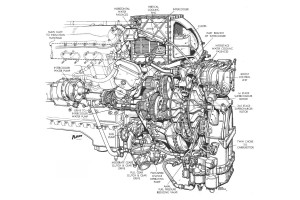
The Merlin had the same supercharger configuration, but was dimensionally smaller because of the reduced engine displacement of 1,650 cubic inches. Image courtesy {link=http://www.aviationhistory.com]Aviation History{/link}.
The supercharger gear box was controlled with respect to altitude;the higher the altitude, the faster the centrifugal blower would spin to cram more air into the intake manifold. This increased the power output at higher altitudes since less dense air would result in lower power. This engine’s supercharging configuration was miles ahead of its time. The basic design of the supercharger is similar to what ProCharger and Vortech market today, except the Griffon had two of them in series.
The Griffon was so advanced for its time that in 1979–forty years after its official introduction–it was placed into a P-51 Mustang in an attempt to set the world speed record for piston-driven aircraft. The Red Baron RB-51 flew at 499.018 mph at Tonopah, Nevada on August 14, 1979, setting a record which stood for almost ten years. The RB-51 had a calculated top speed of 530 mph at 100 degrees Fahrenheit ambient air temperature, but the cooler air experienced during the test reduced the overall top speed. The Red Baron RB-51 flew again in September later that year in another attempt but experienced mechanical complications that resulted in the aircraft crashing with the pilot surviving. The estimated horsepower from the RB-51’s Griffon was 3,900 horsepower at 2,850 rpm and an altitude of roughly 2,000 feet. The engine used in this configuration had slight modifications made to the camshafts, and the supercharger was set to the fastest speed with only a single stage supercharger, similar to the configuration on the River Rat.
The engineering advancements made by the Griffon platform do not end at the supercharger and induction system, as the long block and cylinder-head configurations were also revolutionary for their time. The cylinder heads were a four-valve-per-cylinder configuration with two spark plugs per cylinder, and the single overhead camshaft arrangement is gear/shaft driven. The exhaust valves are sodium filled to help dissipate heat and the valve tips are hardened similar to what current high performance American pushrod V-8 engines use.
The dry sump oil system in the Griffon employs two stages of scavenging and one pressure stage. The Griffon was also one of the first engines that utilized a water/ethylene glycol 70/30% coolant mixture; at the time this platform was developed, water was still used in the cooling system of other engines. Moreover, the supercharger contains a water-to-air intercooler similar to what factory supercharged cars do today nearly seventy years later. The crankshaft is a single piece forging with H-beam connecting rods and high strength forged aluminum pistons.
Tuning Details
Fast forward to Longnecker’s River Rat Unlimited Modified pulling tractor built for the Outlaw Pulling Association–its Rolls-Royce Griffon engine is similar to the one that powered the Red Baron RB-51. The RB-51 utilized aviation gasoline where the River Rat runs on methanol fuel and dual MSD Pro-Mag 44s. Also, the original carburetor was scrapped for a mechanical fuel injection system that Longnecker says is easier to adjust and calibrate.
The River Rat twists the mighty Griffon to 4,000 rpm depending on the track conditions and gearing–far above the 2,850 rpm rated speed of the Red Baron. Since the engine is spinning much faster than originally intended, the boost pressure is higher.
“I build almost fifty pounds of boost at this rpm,” says Longnecker.
With an engine that is this large, both physically and in terms of displacement, there are extreme challenges to calibrating the engine. Moreover, dynamometers that can handle roughly 4,000 horsepower are in short supply. Longnecker does the majority of the engine’s calibration on-track to provide the most accurate operating conditions.
Longnecker monitors the exhaust gas temperatures via thermocouples to maintain 1,100 to 1,200 degrees Fahrenheit for best performance. He’s found that if the exhaust gas temperatures start to increase out of this range, the calibration is too lean and he adjust by adding more fuel to the tuneup. This is done by adjusting the poppets and fuel injector nozzles on the mechanical injection system. Ignition timing presents another challenge for calibration. If the timing is advanced too far, the engine will sneeze during start-up and bend a connecting rod.
“The time needed to tear the engine down and replace the connecting rods is difficult and lengthy, so the timing has been set to 40 degrees,” he explains.
Wayne Longnecker campaigns the River Rat out of Cambridge, Iowa. The River Rat has gone through many different engine combinations over its life. Before the Rolls Royce Griffon, a twin turbo Allison V12 was at the heart of this Unlimited Modified tractor.
The introduction of the Rolls-Royce Griffon into the Outlaw Unlimited Modified Tractor division by Longnecker rocked the pulling tractor world here in the US, as the Griffon has been used significantly in European pulling series but rarely on these shores, although the Unlimited Modified engine regulations allowed one industrial engine (such as a Rolls-Royce Griffon, V12-Allison, or turbine), three wedge headed big-block Chevy Engines, two blown hemi style engines, or five naturally aspirated engines.
Initially the River Rat was regulated to permit the use of only the low speed gear in the single stage supercharger but the rules have been changed shortly to permit the use of the high speed gear. This tractor and engine combination is something that needs to be witnessed in person. If the opportunity arises to attend an Outlaw sponsored pulling event to see the River Rat, don’t miss it!
Multiple injectors per cylinder are utilized to help feed the massive beast. Dual Pro Mag 44 ignitions are set-up with a custom drive and twelve pole distributor caps.



